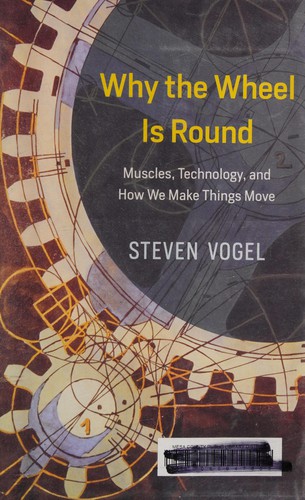Thom reviewed Why the wheel is round by Vogel, Steven
Review of 'Why the wheel is round' on 'Goodreads'
4 stars
Engineer and biologist Steven Vogel writes about the various rotational inventions through history, from water, pottery and spinning wheels to cranks, handspikes and pedal power. Meanders a little, but a lot of solid information to discover.
Chapters focus on specific technologies, covering both history and impact. Quite a few drawings help visualize the description, which isn't always as simple as a hub and axle. Notes and references follow an appendix full of models that can be made to demonstrate the concepts - the author made these while writing the book. His observations about how effective these are is also wonderful.
The topic can be daunting, and the author dives in deep. As mentioned, the timeline meanders a little, focusing on the technology instead. The subtitle is really the focus of the book; the title alone can be misleading. Minor quibbles, though - this is a pretty good book. I plan …
Engineer and biologist Steven Vogel writes about the various rotational inventions through history, from water, pottery and spinning wheels to cranks, handspikes and pedal power. Meanders a little, but a lot of solid information to discover.
Chapters focus on specific technologies, covering both history and impact. Quite a few drawings help visualize the description, which isn't always as simple as a hub and axle. Notes and references follow an appendix full of models that can be made to demonstrate the concepts - the author made these while writing the book. His observations about how effective these are is also wonderful.
The topic can be daunting, and the author dives in deep. As mentioned, the timeline meanders a little, focusing on the technology instead. The subtitle is really the focus of the book; the title alone can be misleading. Minor quibbles, though - this is a pretty good book. I plan to refer back to it in the future, perhaps tackling some of the models.

